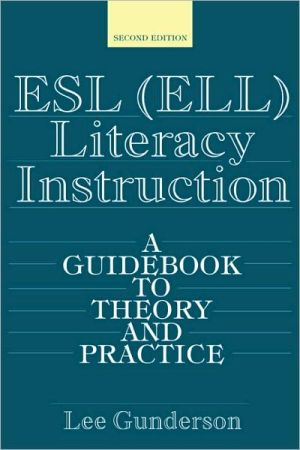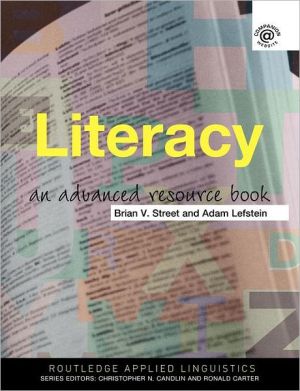The Literacy Gaps: Bridge Building Strategies for English Language Learners and Standard English Learners
The authors provide strategies, examples, and tools to address the gap between ELLs and texts, socio-cultural differences between teachers and ELLs, and language differences between ELLs and peers.
Search in google:
The authors provide strategies, examples, and tools to address the gap between ELLs and texts, socio-cultural differences between teachers and ELLs, and language differences between ELLs and peers.
AcknowledgmentsAbout the Authors1. Introduction to the Achievement Gap and the "Literacy Gaps Model" Demographic Patterns Language Spoken and Socioeconomic Factors ELL Achievement Standard English Learners The National Literacy Panel The Literacy Gaps Model Overview of Book Chapters Summary2. Decoding: Word Recognition Strategies and Fluency Introduction The Gap Between the Student and the Text Decoding and Readability of Text Decoding English Language Development Background Knowledge Summary3. Background Knowledge and Experiences Schema Fit: Becoming a Text Participant Context: Becoming a Text User (Active Participant) Linkages: Becoming a Text Analyst (Reading Critically) Summary4. Comprehension Comprehension Gap Academic Language Passage Comprehension Summary5. English Language Development and Academic English Specialized Language Needs of ELLs Needs of Standard English Learners Academic Language Development Lesson Plan Summary6. Perceptions and Expectations Were Called on Less Frequently and Were Provided Less Time to Respond Were Given the Answer Rather Than Helped to Solve the Problem Themselves Were Criticized More Often, and Praised Less Were Paid Less Positive Attention, but Disciplined More Strictly7. Cultural Differences Connecting the Literacy Domains in Second Language Acquisition Parental Involvement and the Literacy Domains Culturally Responsive Teaching Comprehensive Education Multidimensional Approaches Empowerment Transformative Learning EmancipatoryEducation Summary8. Socioeconomic Differences Implicit and Explicit Codes Discourse Patterns Interactional Styles Written Language Codes Resource Access Summary9. Language Variables Academic Language Competence Summary10. Grouping Strategies Micro Structures That Bridge Language Proficiency Gaps Macro Structures That Bridge Language Proficiency Gaps Summary11. Beyond the Gap/Envisioning the Future The Literacy Gaps Model SummaryGlossaryIndex
\ Guadalupe Valdes"The book makes a contribution to the education of English language learners. It provides practical instructional suggestions for teachers of both ELLs and SELs that are informed by a deep understanding of theories of second language and second dialect acquisition and the development of reading and writing proficiencies."\ \ \ \ \ Kristina Anstrom"The concepts of gaps and bridges are clearly articulated up front and provide a well-structured theme that unites the various parts of the text. The use of this structure provides a logical and coherent mechanism for providing a complete picture of the problem—the literacy gap between ELs and native speakers—and a means for addressing this problem."\ \ \ Ron Klemp"The strategies are clearly presented and there is just enough research cited to provide the rationale for incorporating ideas into instruction. Any teacher will find this book practical, and the discussions will provide meaningful ideas for study groups at the school site."\ \ \ \ \ Yee Wan"This book presents content that is crucial for narrowing the achievement gap and powerful practical instructional strategies for increasing student achievement."\ \







